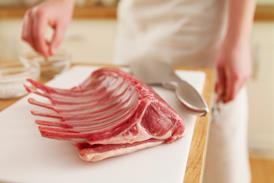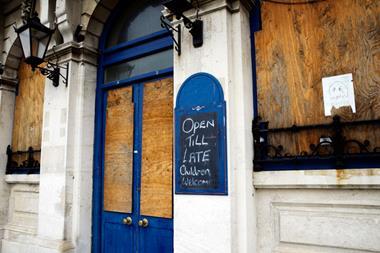DENMARK: seeking an equitable life
The Danes expect the UK to take a bigger slice of their pigmeat, but believe the market here is working against them. Peter Crosskey reports
T he Danish industry's frustration with the climate of the British market has not diminished over the past year.
"It is still a problem to get a fair hearing for our marketing,"Anne-Birgitte Lindholt, md of Danske Slagterier, says. "Our common task with MLC and other bodies should be to promote the total market, to make more people want to buy bacon."
There is the feeling that Danish producers face discrimination in the UK because they haven't completed the move to stall and tether-free group housing for pregnant sows.
While their exports in pork cuts to the UK rose 15% to 81,951 tonnes last calendar year, the trade in bacon was down by 13% to 99,556 tonnes.
They say the UK industry has failed to take into account the fact that half of their pigmeat shipped to the UK can fulfil UK requirements for group housing systems.
Danish producers are also waiting to hear the outcome of their protest to the Advertising Standards Authority over the controversial £4.5m MLC advertising campaign, promoting the British Meat Quality Bacon Mark.
The actions of some organic accreditation bodies, of which there are six in the UK, are said to have held back imports from Denmark.
Lars Mikkelsen, deputy general manager of Friland Foods, the country's largest organic producers' co-op, is critical of what he calls the idealist streak that runs through Soil Association accreditation demands which slowed down acceptance of his products by UK retailers. Nevertheless Denmark expects to ship marginally more pigmeat this year to the UK than last year. Part of this can be explained by Danish forecasts of a small drop in volumes to Japan and Korea this year.
Danish farmers have recovered from the disastrously low price level of 6kg/krone, which they earned for their pigmeat last February. The industry is now seeing prices at break even and better. Depending on the size of the pig farm, break even will fall somewhere between 8.50kr/kg and 9kr/kg for conventional production.
And there are no words of comfort for those who hanker after higher rates. "These are the good times," warns Danske Slagterier economist Carsten Flemin.
The Danes are watching the Spanish industry like hawks because this is the EU state where much of this year's EU-wide 1.5% growth in pig production is expected to come from and it is also the country with the substantial investment and capacity that could one day challenge the Danes in their own export markets.
The Danes have watched the yen recovering since January, while the US dollar and sterling have both strengthened against the Danish krone, much to exporters' delight.
However, the globalisation of pigmeat trading, as Flemin points out, means that national markets become much more vulnerable to movements elsewhere in the world.
One result is that the fluctuations in world pigmeat production are widening.
The Danes are optimistic that future environmental legislation will stabilise production levels.
In part they hope that as EU producers are forced to adopt higher standards, entry to the industry will be held back and no longer be an economic whim to be indulged when the time looks right.
{{FOCUS SPECIALS }}
Close menu
- Home
- Retail & Wholesale
-
Products & Suppliers
- Back to parent navigation item
- Products & Suppliers
-
Product Categories:
- Back to parent navigation item
- Product Categories:
- Alcoholic drinks
- Bakery
- Cereals & breakfast
- Cheese
- Chicken & poultry
- Chocolate
- Confectionery
- Crisps, nuts & snacks
- Dairy
- Fish
- Fresh produce
- Frozen
- Household
- Meat
- Own Label
- Sauces & condiments
- Seasonal
- Soft drinks
- Vaping
- Vegan & plant-based
- World foods
- Suppliers
- People
- Reports & Data
-
Topics A-Z
- Back to parent navigation item
- Topics A-Z
-
Popular topics:
- Back to parent navigation item
- Popular topics:
- Cost of living crisis
- Crime
- Deposit Return Schemes
- Finance
- Government & Regulation
- Health
- Inflation
- Loyalty
- Marketing
- Mergers & Acquisitions
- New Product Development
- Sourcing
- Supply chain
- Sustainability & environment
- Technology
- Ultra Processed Foods
- Vaping
- A-Z all topics
- Content by type:
- Events
- Ask iA (beta)
- Subscribe now
Sign in to comment on this article
Not logged in before? Register for FREE guest access today.
You will be able to:
- Read more stories
- Receive daily newsletters
- Comment on stories
Advert
















No comments yet